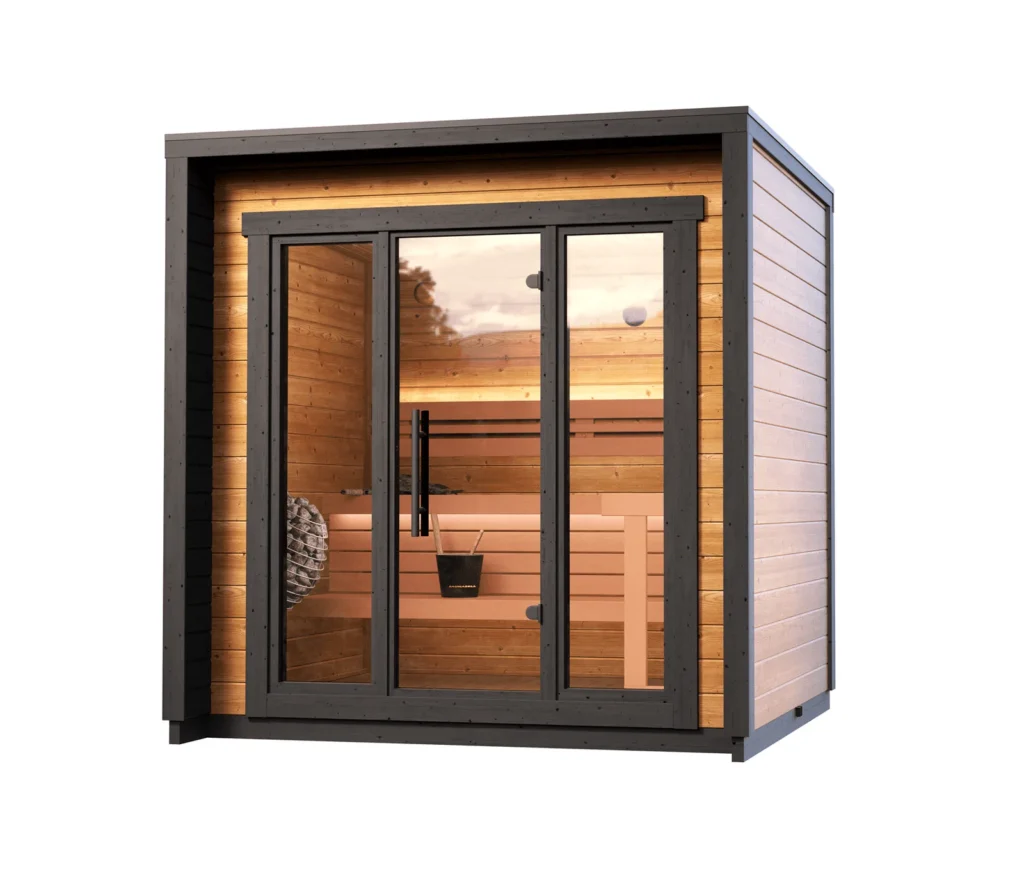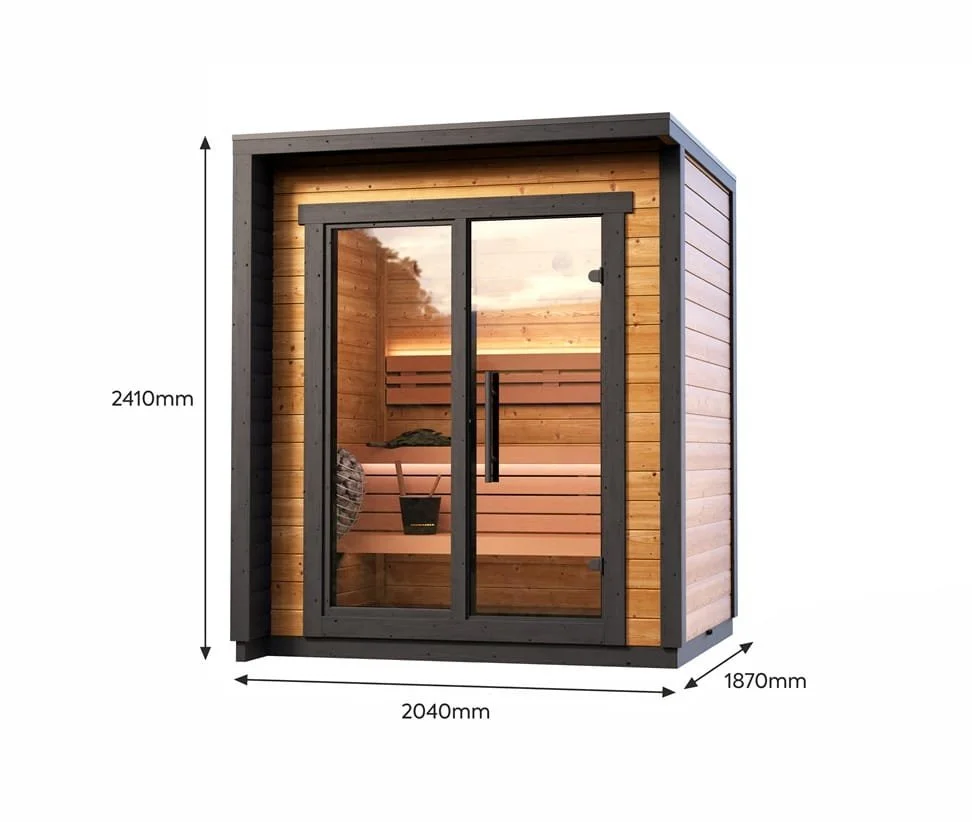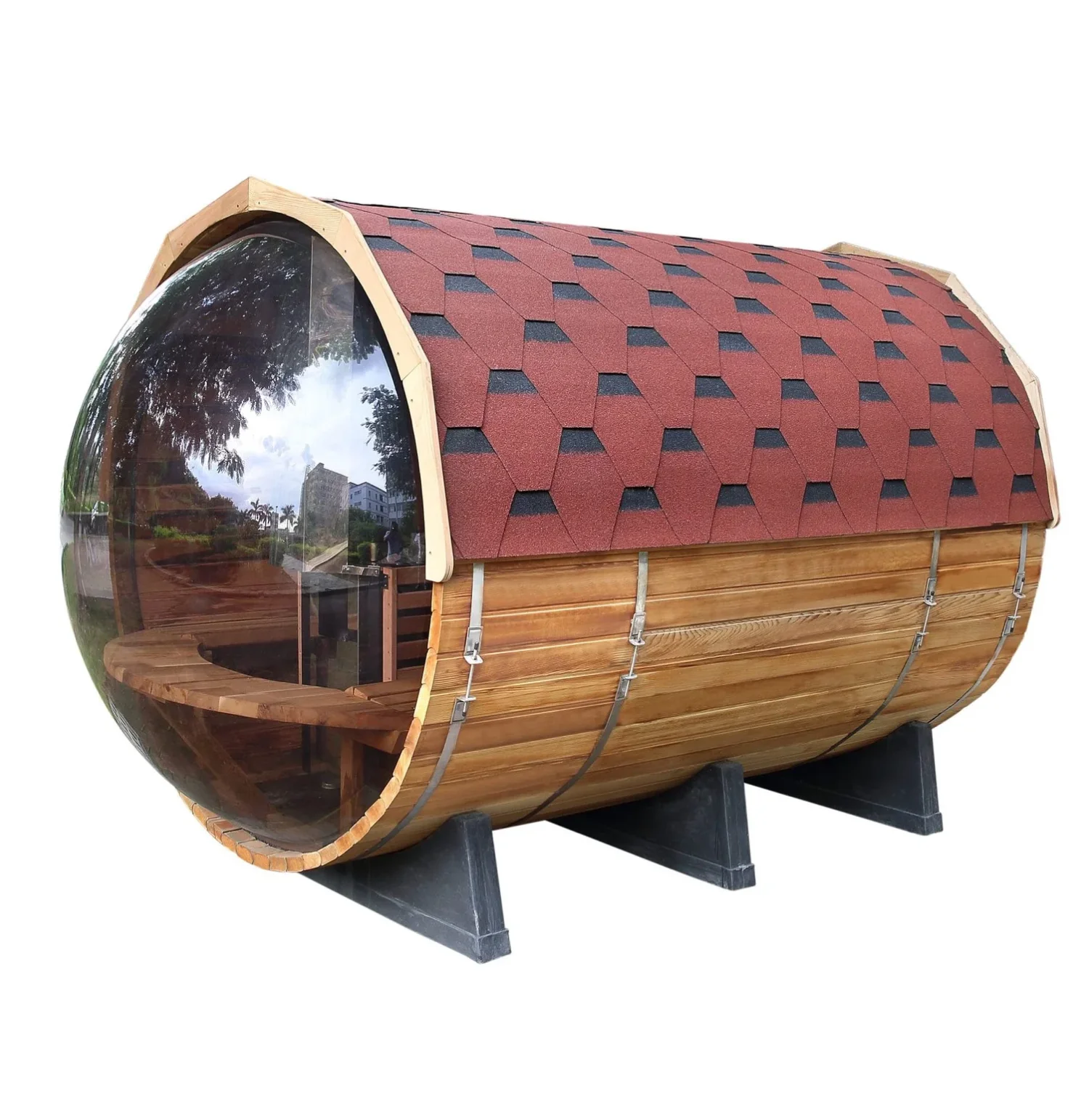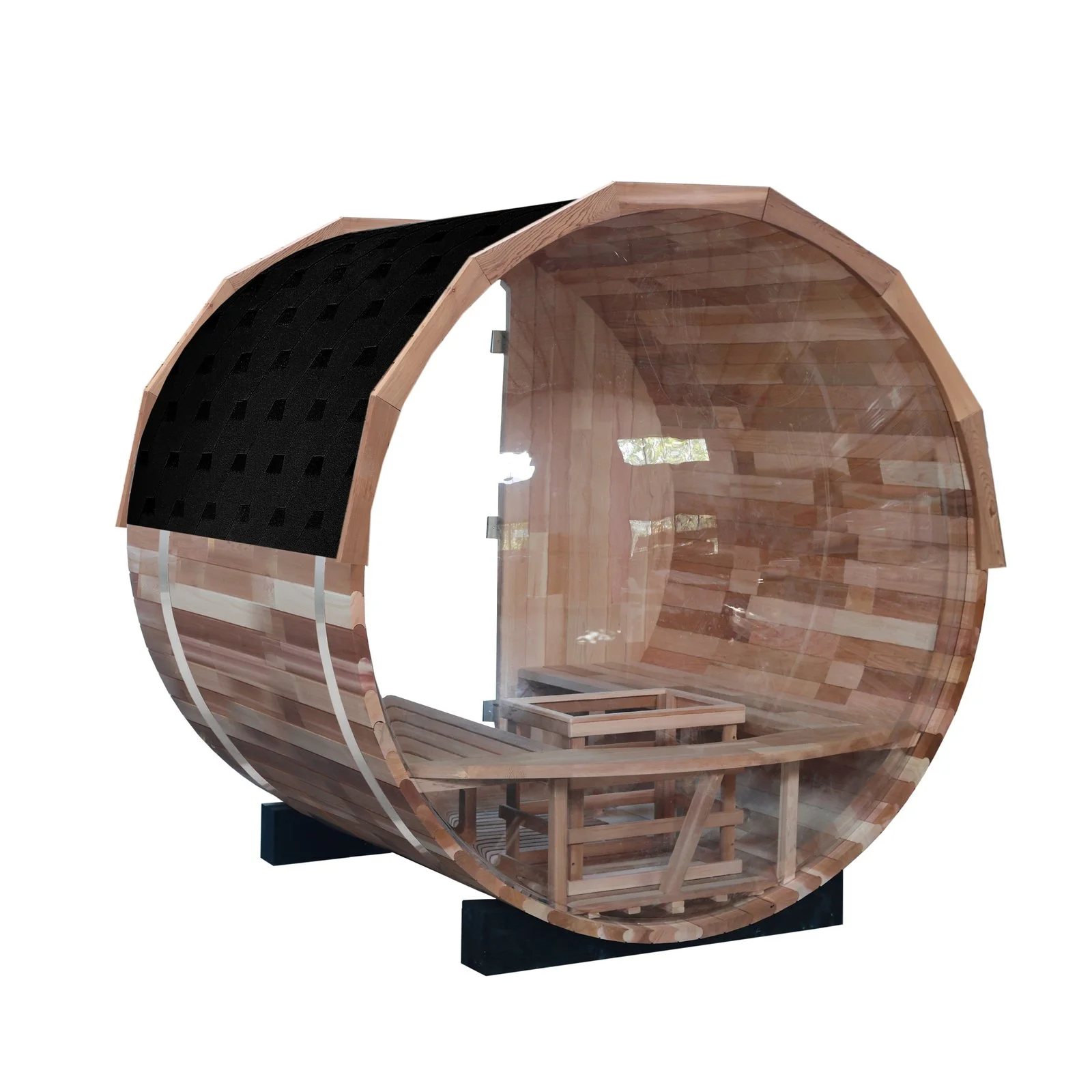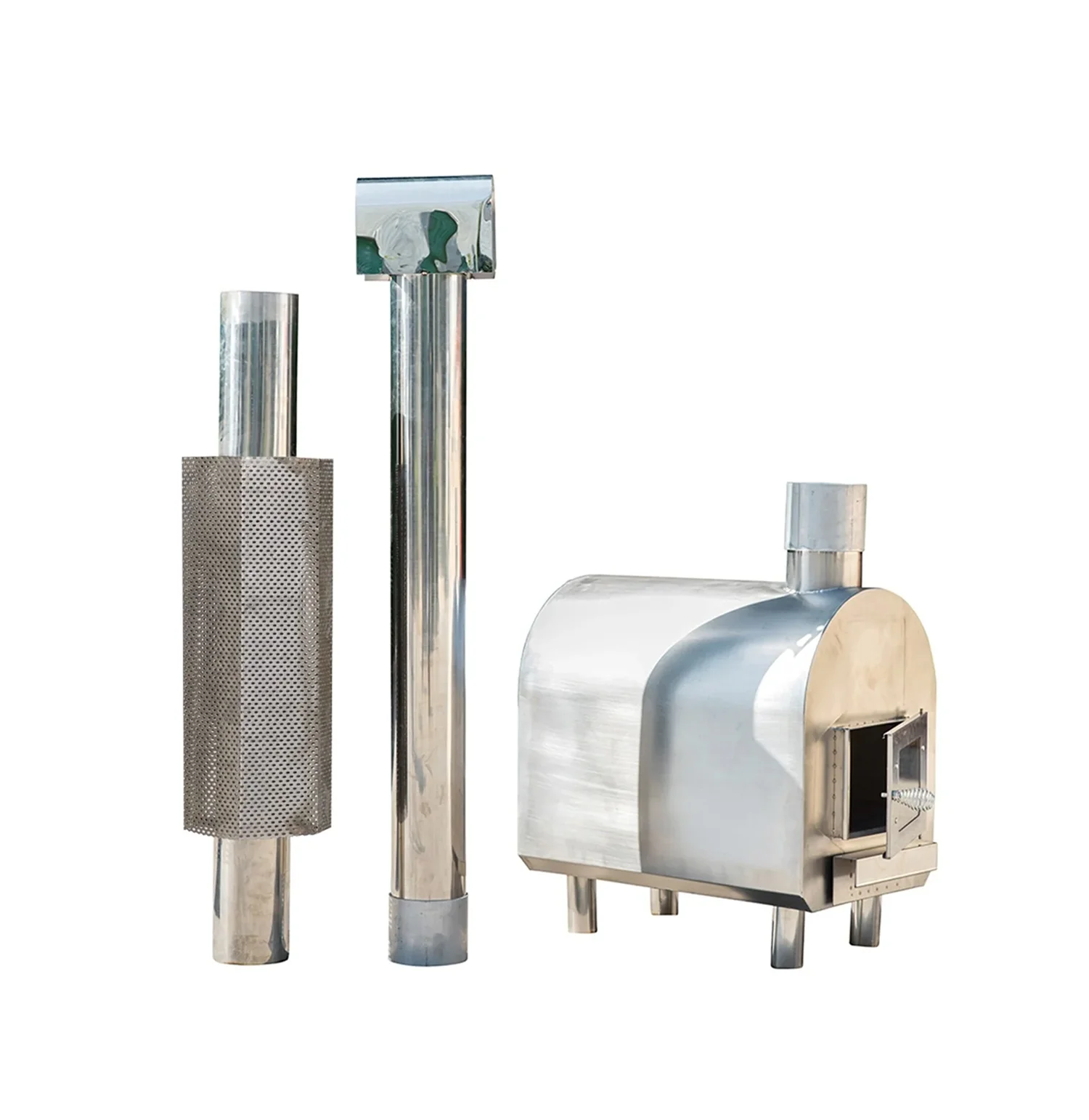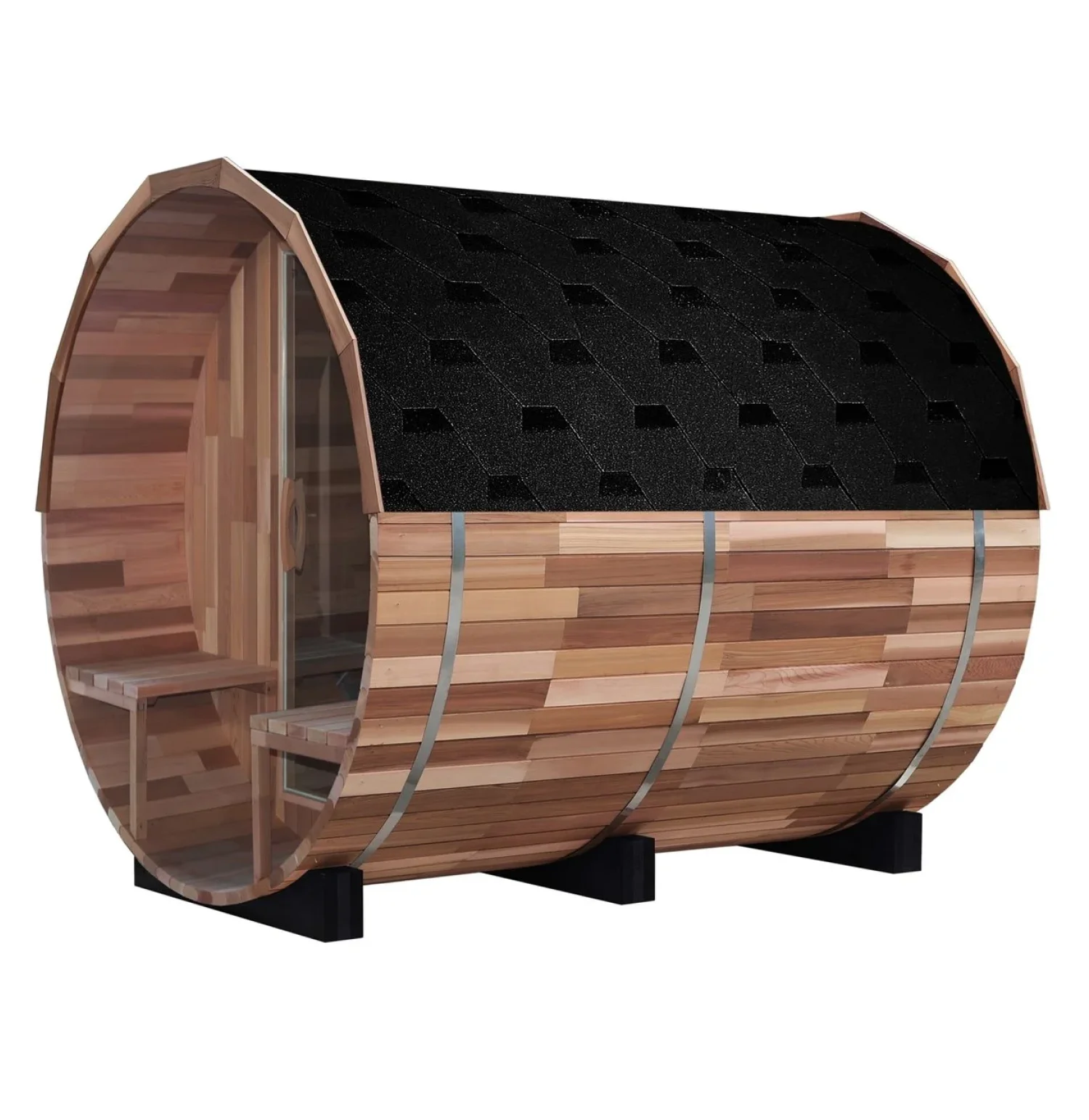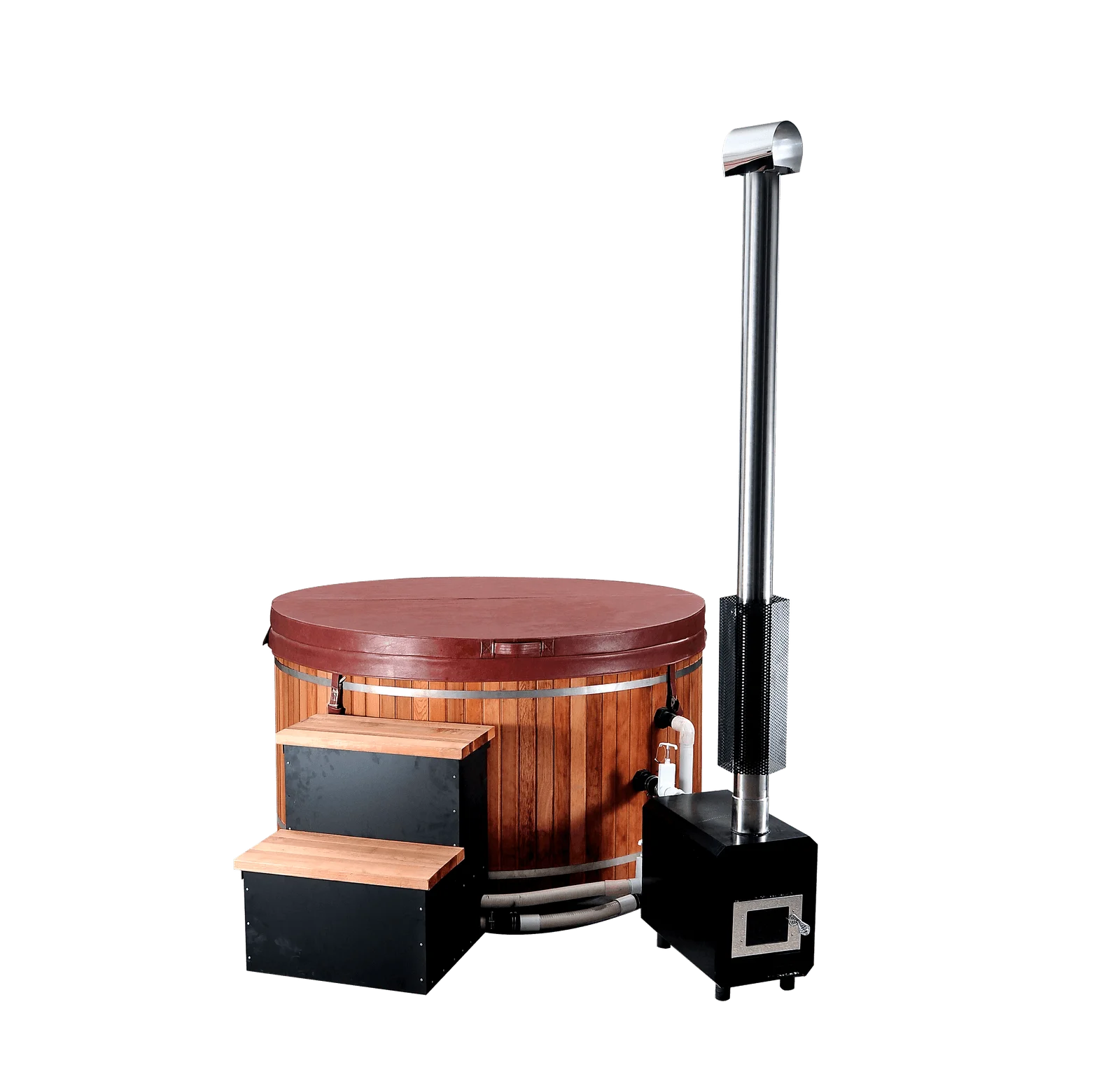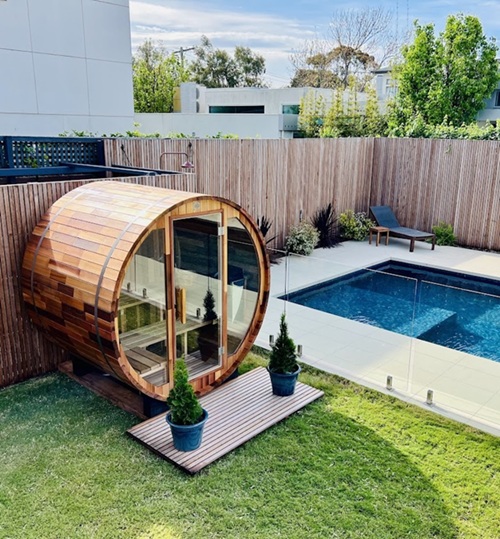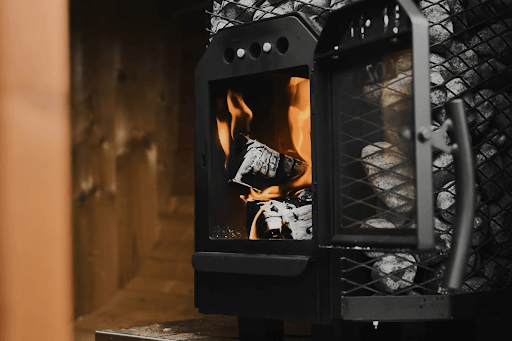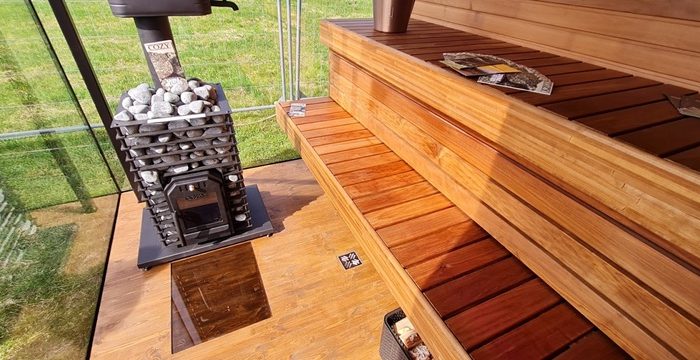When the glow of screens dominates our days, the simple warmth of a real conversation with those we love is what we crave most.
At Shym Saunas, we believe saunas and hot tubs do more than warm the body – they foster moments that matter, bringing family and friends together. But with so many options – Finnish saunas, Russian banyas, Estonian smoke saunas, infrared cabins, and steam rooms – many people ask, What type of sauna is better?
This guide compares the major sauna traditions and technologies, explains their cultural origins and wellness benefits, and helps you choose the right fit for your home and lifestyle.
Points to Remember:
- Finnish saunas provide dry, tranquil heat and a chance to reconnect with nature, while Russian banyas deliver humid steam and a lively social atmosphere. The Estonian smoke sauna uses smoke-filled rooms and slow heating.
- Infrared and Steam saunas heat the body in unique ways. Traditional saunas heat the air around you; infrared saunas penetrate the skin with light at lower temperatures, while steam saunas envelop you in moist heat.
- Wellness benefits vary, but they center on relaxation, circulation, and social connection. All sauna types promote sweating, detoxification, improved circulation, and stress relief. Banyas emphasise communal rituals like venik massage, whereas Finnish saunas provide quiet reflection.
- Choose the right sauna based on your space, budget and lifestyle. Outdoor wooden cabins suit families and those seeking traditional rituals; infrared cabins are compact and energy‑efficient; steam rooms and banyas require more humidity control. Consider materials, heater types, and installation needs, then pick a sauna that supports meaningful connections and wellness moments.
In Australia, outdoor sauna setups are particularly popular, thanks to our mild winters and love of backyard living. Many households choose to install saunas on decks or near pools to create a natural “hot–cold” ritual, pairing sessions with a plunge or outdoor shower. If you’re planning an installation, make sure it’s connected by a licensed electrician under AS/NZS 3000 wiring rules with a dedicated RCD-protected circuit. Coastal homes benefit from thermowood or Nordic spruce cabins with stainless fixings to withstand UV and salty air, while those in cooler climates (like VIC highlands or TAS) may prefer higher-temperature traditional saunas that hold heat longer.
Type of Saunas: Finnish, Russian, Estonian, Infrared and Steam Sauna Compared in a Nutshell
| Type of sauna | Heat source | Temp range | Benefits | Best for |
|---|---|---|---|---|
| Finnish (traditional dry) sauna | Wood, electric or gas heaters heat the air. | About 150‑195 °F (65‑90 °C), low humidity (5‑10%). | Intense sweating, relaxation, circulatory boost. | Those seeking a classic, quiet ritual with dry heat and a hot‑cold contrast. |
| Russian banya (steam bath) | Wood‑fired stove heats stones; water thrown on stones to produce steam. | Lower heat (~70 °C) but high humidity (40‑60%). | Deep sweating, venik massage, social bonding, aromatherapy. | People who enjoy communal experiences and humid heat with traditional rituals. |
| Estonian smoke sauna | Fire heats stones; smoke fills room then is aired out. | Slow, moderate heating; smoke is ventilated before entry (no specific temp range). | Meditative experience, family bonding, cultural heritage. | Those seeking a rustic, UNESCO‑listed tradition and a slow, reflective ritual. |
| Infrared sauna | Near‑/far‑infrared lamps or panels heat the body directly. | About 110‑150 °F (43‑65 °C) depending on lamp type. | Sweating at lower air temperature, muscle recovery, skin health. | Users wanting gentle heat, energy efficiency and easy indoor installation. |
| Steam sauna (steam room) | Electric heater boils water to create vapour. | Around 110‑120 °F (43‑49 °C) with near‑100 % humidity. | Moisture hydrates skin and airways, promotes relaxation and detox. | People who prefer moist heat for skin and respiratory benefits. |
Understanding Sauna Types
Before diving into specific traditions, it’s helpful to understand the main categories of saunas:
1. Traditional dry saunas
Traditional saunas – often called Finnish – heat the air to around 70–100 °C using wood‑fired, electric, or gas heaters. The heat warms the skin and promotes profuse sweating. You can throw water on hot stones for a quick burst of steam, but the overall environment stays relatively dry.
2. Steam saunas
Steam saunas, sometimes called Turkish baths or steam rooms, generate moist heat at lower temperatures (around 110–120 °F/43–49 °C). A heater boils water to create vapor that fills the room, raising humidity and causing the body to heat up from the moist air. The intense humidity can feel more enveloping than dry heat and is often used therapeutically for skin and respiratory benefits.
3. Infrared saunas
Infrared saunas use near‑ or far‑infrared light panels instead of hot stones. These panels emit wavelengths that penetrate the skin and gently heat the body from within at lower air temperatures (110–150 °F/43–65 °C), promoting sweat without the extreme heat of a traditional sauna. Infrared cabins are often smaller and easier to install in homes.
Finnish saunas: tradition and tranquillity
The Finnish sauna is widely considered the gold standard of steam baths. Its origins stretch back over 2,000 years and are deeply embedded in Finnish culture. In a country of 5.5 million people, there are over 3 million saunas – many built from wood near lakes, allowing users to alternate between intense heat and cold water.
Experience and ritual. Inside a Finnish sauna, wooden benches are arranged in tiers. The heat is dry and intense, and people often sit in silence, focusing on their breathing and letting the heat work its magic. Traditional sauna culture encourages a plunge into a cold lake or snow to stimulate circulation and invigorate the body.
Materials and design. Finnish saunas are minimalist and tranquil. Thermotreated Nordic spruce and cedar are common, creating a warm, rustic atmosphere. Many families build saunas outdoors to connect with nature.
For a classic Finnish experience at home, consider our Thermowood Barrel Sauna – a compact yet spacious cabin crafted from thermotreated Nordic spruce with split‑level benches. Its efficient wood‑burning or electric heater delivers dry heat, and the rounded design promotes even airflow. It’s perfect for families seeking quiet ritual and connection.
Russian banyas: social steam and venik rituals
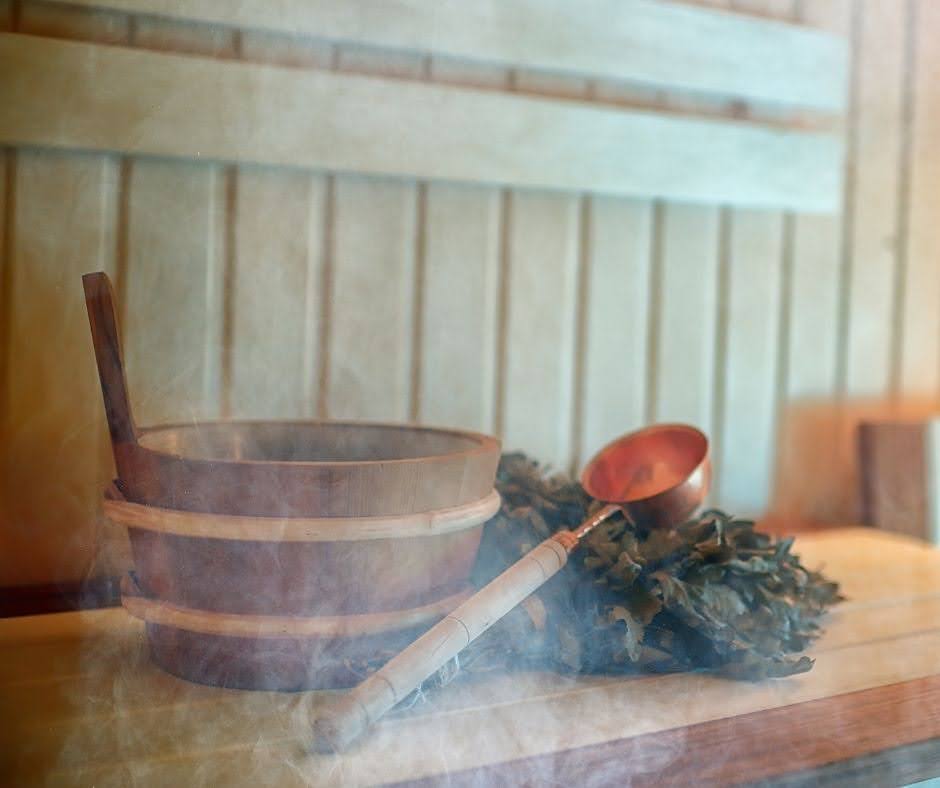
The Russian banya shares similarities with the Finnish sauna but emphasises humidity and social ritual. Dating back over 1,000 years, the banya is more than a place to sweat – it’s a social and spiritual gathering.
Communal atmosphere. Banyas are lively and communal, often filled with chatter and laughter. Friends and family gather to share stories between rounds of steam, and the banya may host important life events such as pre‑wedding rituals.
Steam and venik. Inside the parilka (steam room), humidity levels are high. Hot stones are doused with water to produce thick steam that penetrates deeply. A unique aspect of banya culture is the venik ritual – gently beating or massaging the skin with leafy birch or oak branches to stimulate circulation and release aromatic oils. Between rounds, bathers jump into cold water or roll in snow for an invigorating contrast.
So, is a banya better? If you crave an intense, communal experience with humid heat and cultural rituals, a Russian banya may suit you. The venik massage is both therapeutic and symbolic, adding a layer of connection not found in other saunas.
To bring banya culture home, any quality cedar or timber sauna can work. For example, our Red Cedar Wet/Dry Barrel Sauna (4-Person with Front Porch) from Shym Saunas is ideal. It traps steam well, so you can do multiple steam rounds, infuse smell, use venik, cool down, and socialize in between. The front porch serves as a resting/cooling spot. This lets you recreate the rituals of a banya even with a standard sauna.
Estonian smoke saunas: UNESCO‑listed heritage

Photo Credit: UNESCO
Lesser-known but equally fascinating is the Estonian smoke sauna. In the Vôromaa region, UNESCO recognises it as an intangible cultural heritage. Unlike modern saunas, smoke saunas have no chimney; smoke fills the room while it heats, then is aired out before people enter.
A slow, meditative process. Smoke saunas heat gradually and involve silence and natural tools like birch whisks. The ritual is deeply connected to family bonding and spiritual cleansing, influenced by both Finnish and Russian traditions. For those seeking a rustic, meditative experience steeped in history, a smoke sauna offers something special.
Infrared vs. Traditional vs. Steam: Choosing your technology
While cultural saunas focus on tradition, modern technology has introduced infrared and refined steam options. When deciding what type of sauna is better, consider the following:
- Temperature and heat delivery. Traditional saunas use high temperatures and heat the air; infrared saunas operate at lower temperatures and warm the body directly. Steam rooms rely on moist heat to raise body temperature.
- Space and installation. Infrared saunas are typically compact, plug‑and‑play cabins that fit in small rooms. Traditional wooden saunas need more space and ventilation, while steam rooms require moisture control.
- Cost and energy efficiency. Traditional saunas can range from AU$5,000 to $12,000 and require larger heaters. Infrared cabins are often more affordable (AU$3,000–$8,000) and energy‑efficient. Steam saunas fall somewhere in between, with higher humidity demands.
Health benefits. All types offer benefits like relaxation, improved circulation, and stress relief, but with differences:
- Traditional saunas: strong sweating, cardiovascular stress, good for tolerance of high heat, may improve heart health.
- Infrared saunas: gentler heat; may help with muscle recovery, pain relief, skin health, possibly lower stress, and easier use for those sensitive to hot/dry heat.
- Steam rooms: high humidity helps respiratory comfort, skin hydration, and may be more comfortable for some people even if the air temp is lower.
Health Benefits and Considerations
No matter which sauna you choose, the core benefits include:
- Improved circulation and detoxification. The heat causes blood vessels to dilate, boosting circulation and sweating out impurities.
- Stress reduction and relaxation. Warmth triggers the release of endorphins and helps unwind tense muscles. Finnish saunas are particularly tranquil, while banyas emphasise social connection.
- Skin and respiratory health. Steam saunas hydrate the skin and open airways; infrared saunas may improve skin tone by increasing blood flow.
- Community and connection. Social sauna rituals – whether chatting in a banya or sharing quiet moments in a Finnish sauna – foster real‑time connections that support mental health and happiness.
Safety Tips
- Listen to your body. Sauna sessions should feel comfortable. Stay hydrated and limit time inside, especially in high heat.
- Consult health professionals. People with heart conditions, high blood pressure, or pregnancy should seek medical advice before using saunas.
- Maintain cleanliness. Proper ventilation and regular cleaning prevent mould and bacteria, particularly in steam rooms.
Choosing the Best Type of Sauna for Your Home
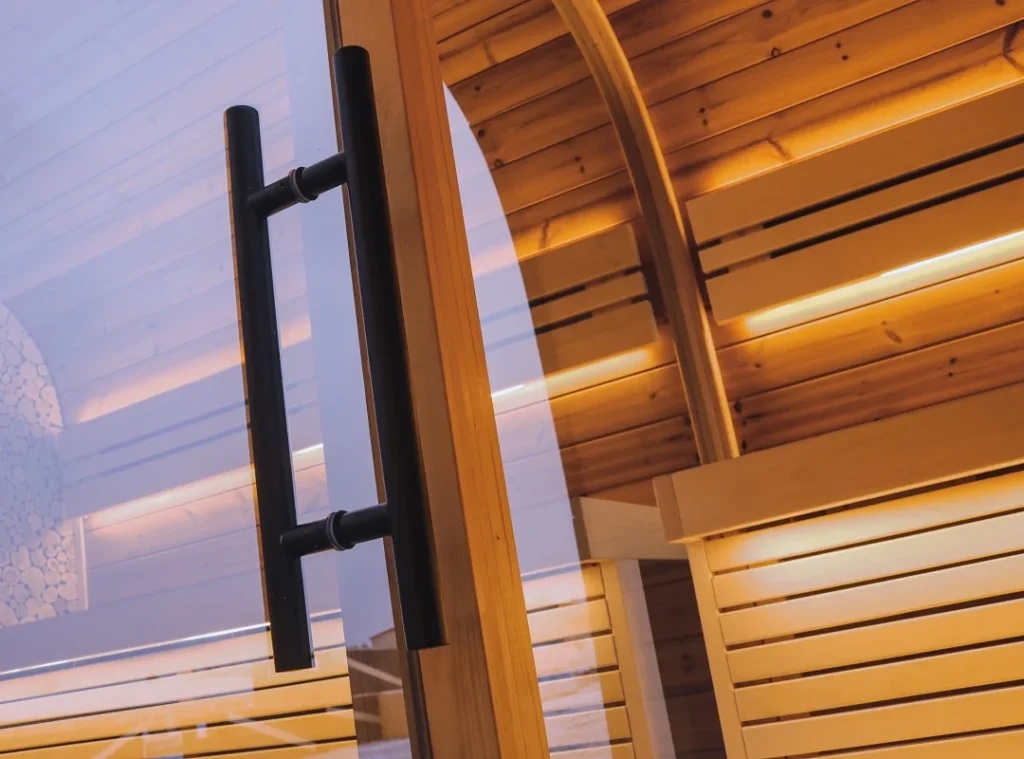
Outdoor or indoor, in compact spaces or in the wide outdoors, there’s the right sauna for you!
Selecting the best sauna is about aligning function with feeling – a guiding principle at Shym Saunas. Think about:
Space and setup
- Indoor vs outdoor. Indoor infrared cabins or small traditional saunas suit urban homes and apartments. Outdoor barrel saunas require more space but provide a natural escape and the option for cold plunges.
- Ventilation and electrical requirements. Traditional and steam saunas need proper ventilation and will require dedicated electrical circuits or wood‑burning flues.
- Aesthetics. Choose materials like thermowood, Nordic spruce, or cedar for a premium look and lasting durability.
Energy efficiency and sustainability
Heating a sauna can consume significant energy. Infrared cabins are generally more efficient because they heat the body directly. If you prefer wood‑burning heaters, select sustainably sourced wood and consider thermotreated timbers like those used in our products, which offer durability and efficient heat.
Lifestyle and wellness goals
- Quiet reflection vs social interaction. Do you prefer meditative silence? A Finnish or Estonian sauna might be better. Looking for an engaging social ritual? A banya or large steam cabin fosters interaction.
- Recovery and performance. Athletes and active people may benefit from infrared saunas’ lower temperatures and deeper tissue warming.
- Cultural connection. Embracing the rituals of your heritage or exploring new cultures can deepen the sauna experience.
We believe your sauna should match your lifestyle, space, and wellness goals. Below are several traditional log and barrel sauna options that reflect craftsmanship, natural materials, and a satisfying sauna experience.
- Cozy Social Cabin: For groups of 4-6 who enjoy ritual and company, our Patio XS Thermo Treated Spruce model offers enough space for steam rounds and rest. With durable spruce timber, solid build, and good insulation, it retains heat well and encourages shared moments.

- Compact Outdoor Retreat: If your outdoor space is limited but you still want fresh air and authenticity, the Patio XXS Thermo Spruce or even the Patio 3XS delivers. Smaller footprint, robust timber structure, traditional heater capabilities — all the essence of a classic sauna in a more compact form.

- Classic Barrel Aesthetic: If you appreciate traditional design and efficient performance, our Barrel Saunas combine natural form with function. The curved barrel shape helps circulate heat evenly. It makes for a beautiful feature in any yard and delivers the classic sauna experience we’re proud to offer.
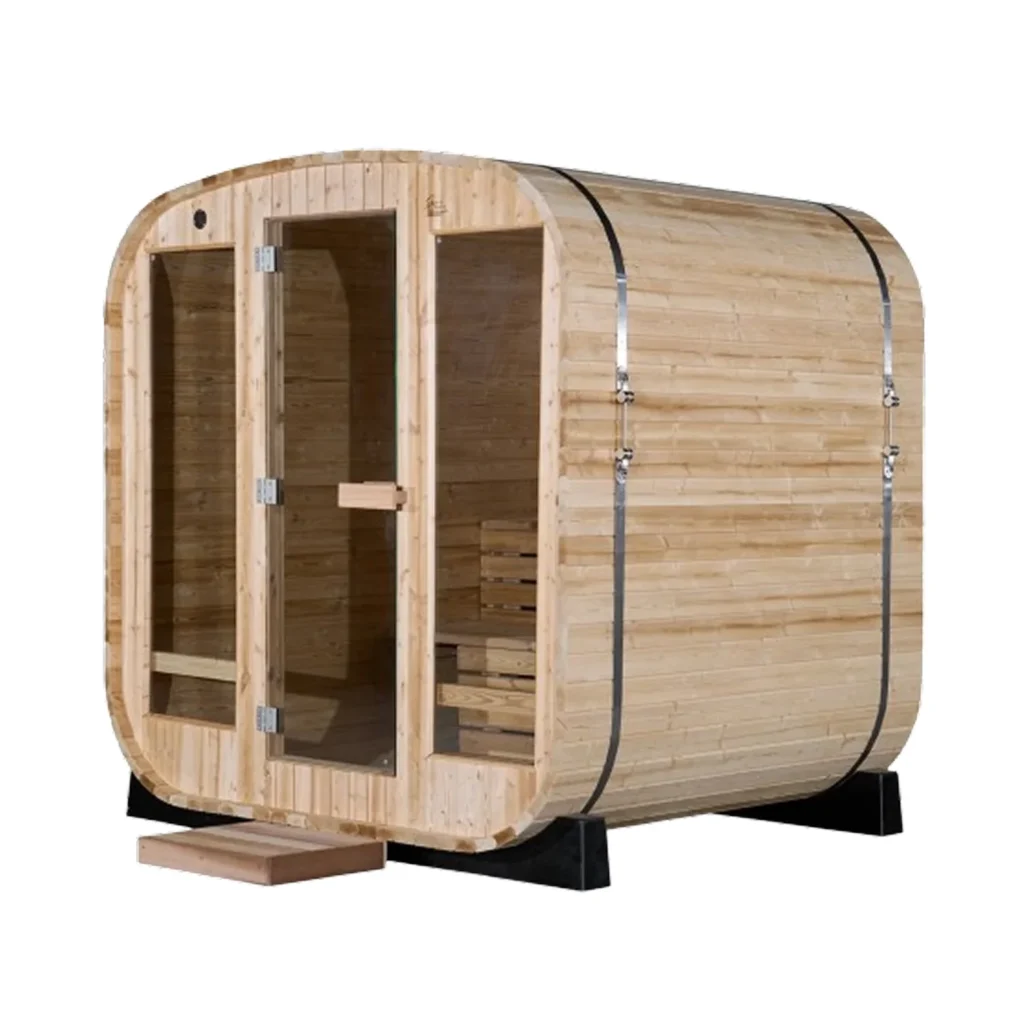
- For Expanded Capacity or Group Wellness Use: If you want a sauna that can host wellness gatherings, shared rituals, or group relaxation, here are three Shym models built for space, comfort, and tradition:
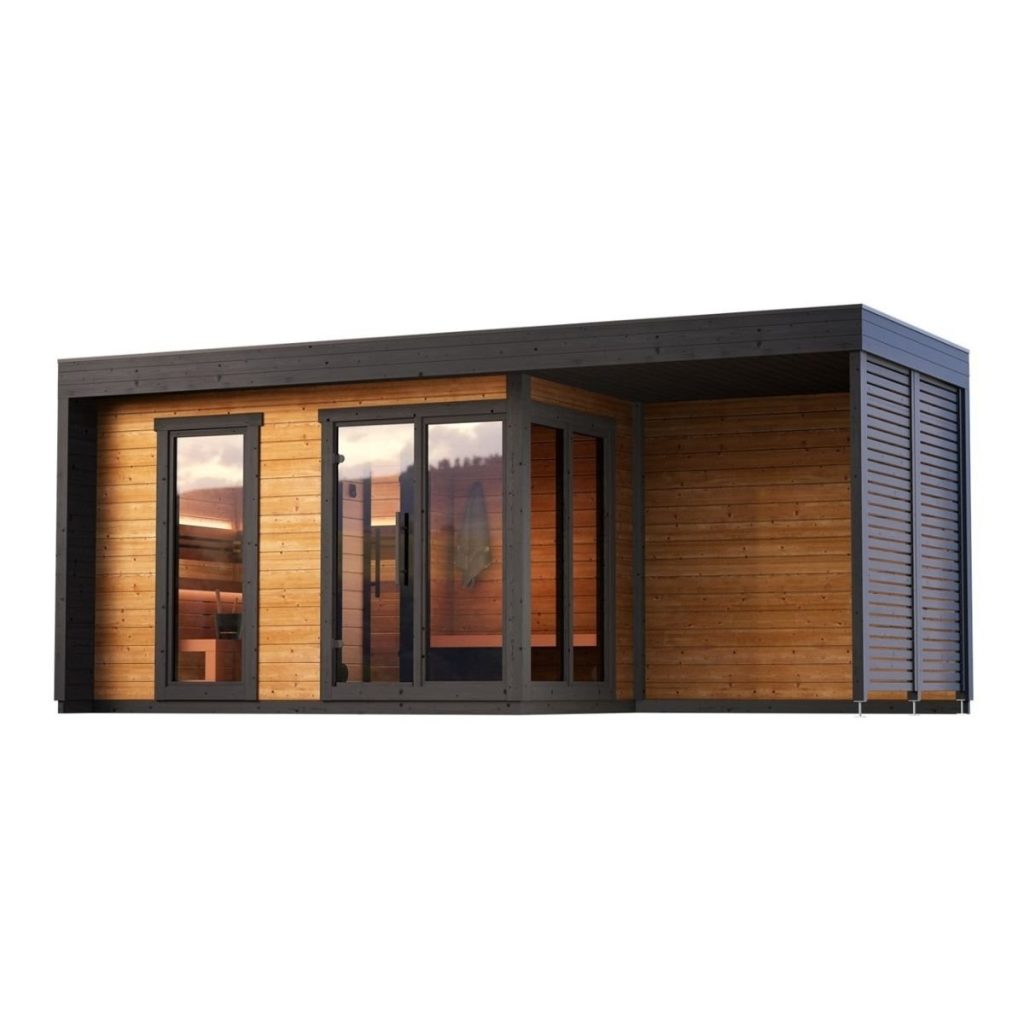
- Patio L Plus: Ideal for 4-8 people, this model features a large cabin layout with a changing area and an open-roofed section. Built from thermo-treated spruce with thick walls, it retains heat well and gives plenty of room for steam rounds, socialising, and cooling/rest breaks.
- Serenity Round Cube Relax (4-10 Person): With space for up to 10 people, this round-cube model uses premium spruce logs (thick timber) and a roomy bench layout. Its shape helps even heat distribution and gives multiple seating levels — good for relaxing or ceremonial heat/steam rituals together.
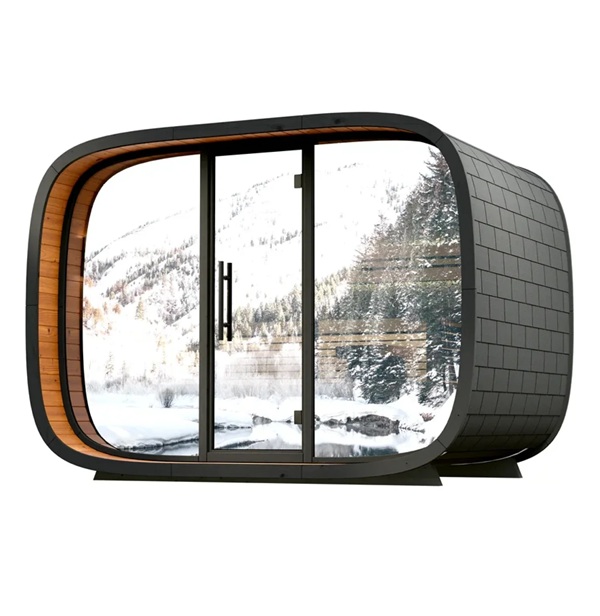
- Outdoor Spruce Cube Log Sauna (4-10 Person): This is the more budget-friendly large-capacity option. Solid spruce logs, tough build, and capacity for 4 to 10 people. If you want strong value — more people, traditional materials, sturdy construction — this model gives group wellness use without costly luxury extras.
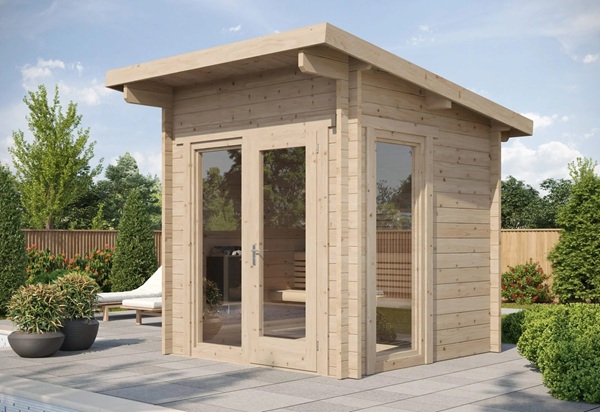
FAQs about Sauna Types
[saswp_tiny_multiple_faq headline-0=”h3″ question-0=”Are Russian banyas and Finnish saunas the same?” answer-0=”No. Finnish saunas use dry heat and are typically quiet and introspective. Russian banyas are humid, social steam houses where people perform venik rituals and cool off in cold water.” image-0=”” headline-1=”h3″ question-1=”Is infrared heat as beneficial as traditional sauna heat?” answer-1=”Both promote sweating and circulation, but they deliver heat differently. Infrared saunas warm the body directly and operate at lower air temperatures, which some people find more comfortable. Traditional saunas may provide a stronger cardiovascular response due to higher temperatures.” image-1=”” headline-2=”h3″ question-2=”Are steam rooms considered saunas?” answer-2=”Steam rooms share similar benefits but use moist heat. They are not technically Finnish saunas because humidity levels are much higher, and the tradition comes from Turkish baths.” image-2=”” headline-3=”h3″ question-3=”What is a smoke sauna?” answer-3=”Estonian smoke saunas have no chimney; smoke fills the room and is aired out before bathing. The ritual emphasises slow heating and silence.” image-3=”” headline-4=”h3″ question-4=”How long should I stay in a sauna?” answer-4=”Typical sessions last 10–15 minutes, with breaks to cool down. Listen to your body and avoid prolonged exposure.” image-4=”” count=”5″ html=”false”]
Are Russian banyas and Finnish saunas the same?
No. Finnish saunas use dry heat and are typically quiet and introspective. Russian banyas are humid, social steam houses where people perform venik rituals and cool off in cold water.
Is infrared heat as beneficial as traditional sauna heat?
Both promote sweating and circulation, but they deliver heat differently. Infrared saunas warm the body directly and operate at lower air temperatures, which some people find more comfortable. Traditional saunas may provide a stronger cardiovascular response due to higher temperatures.
Are steam rooms considered saunas?
Steam rooms share similar benefits but use moist heat. They are not technically Finnish saunas because humidity levels are much higher, and the tradition comes from Turkish baths.
What is a smoke sauna?
Estonian smoke saunas have no chimney; smoke fills the room and is aired out before bathing. The ritual emphasises slow heating and silence.
How long should I stay in a sauna?
Typical sessions last 10–15 minutes, with breaks to cool down. Listen to your body and avoid prolonged exposure.
Conclusion: Which sauna is better?
Asking “what type of saunas are better?” is like asking which musical genre is best – it depends on your mood, goals, and sense of connection. Finnish saunas provide a timeless ritual of dry heat, silence, and nature. Russian banyas are social and steamy, inviting communal laughter and venik massages. Estonian smoke saunas immerse you in heritage, while infrared and steam saunas offer modern convenience and gentle therapeutic heat.
Whichever you choose, remember that the real magic of a sauna lies in the moments of warmth, ritual, and connection you create. Invest in a space that invites you to unplug, breathe deeply, and share meaningful time with those you love. At Shym Saunas, we’re here to help you turn your wellness dreams into a handcrafted reality.

